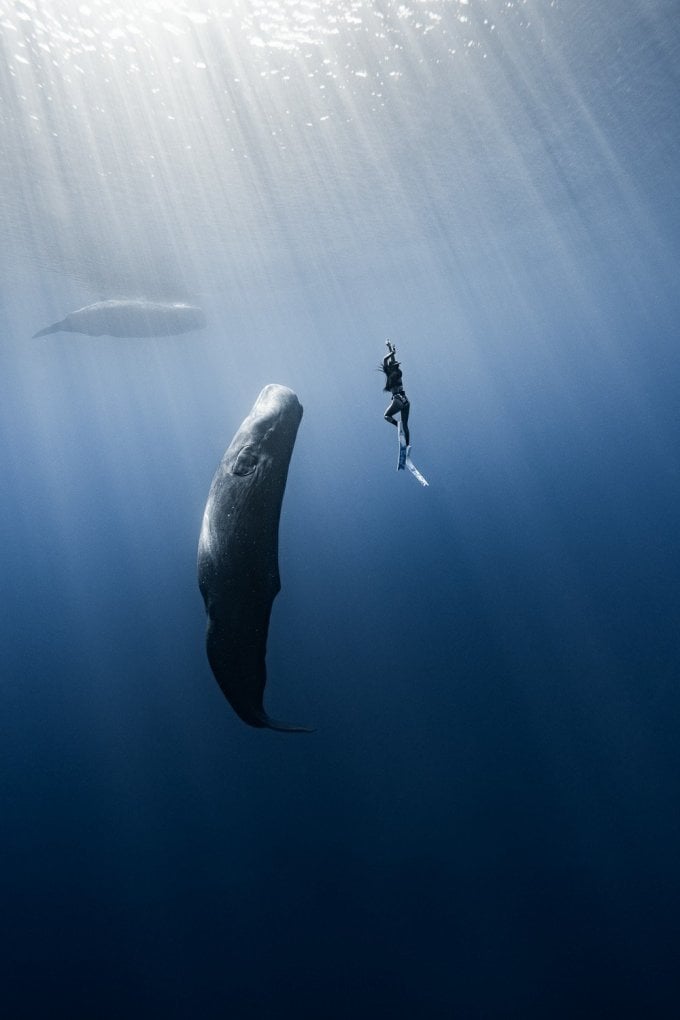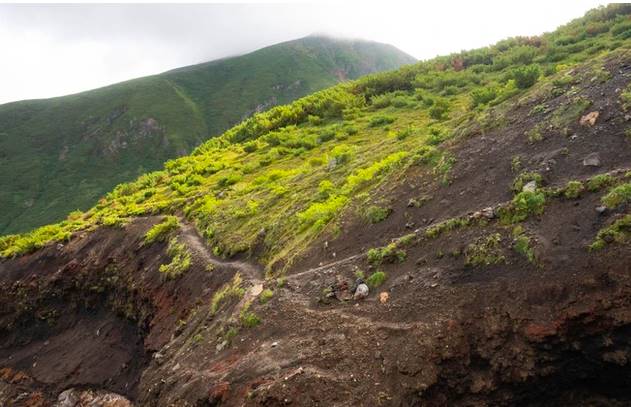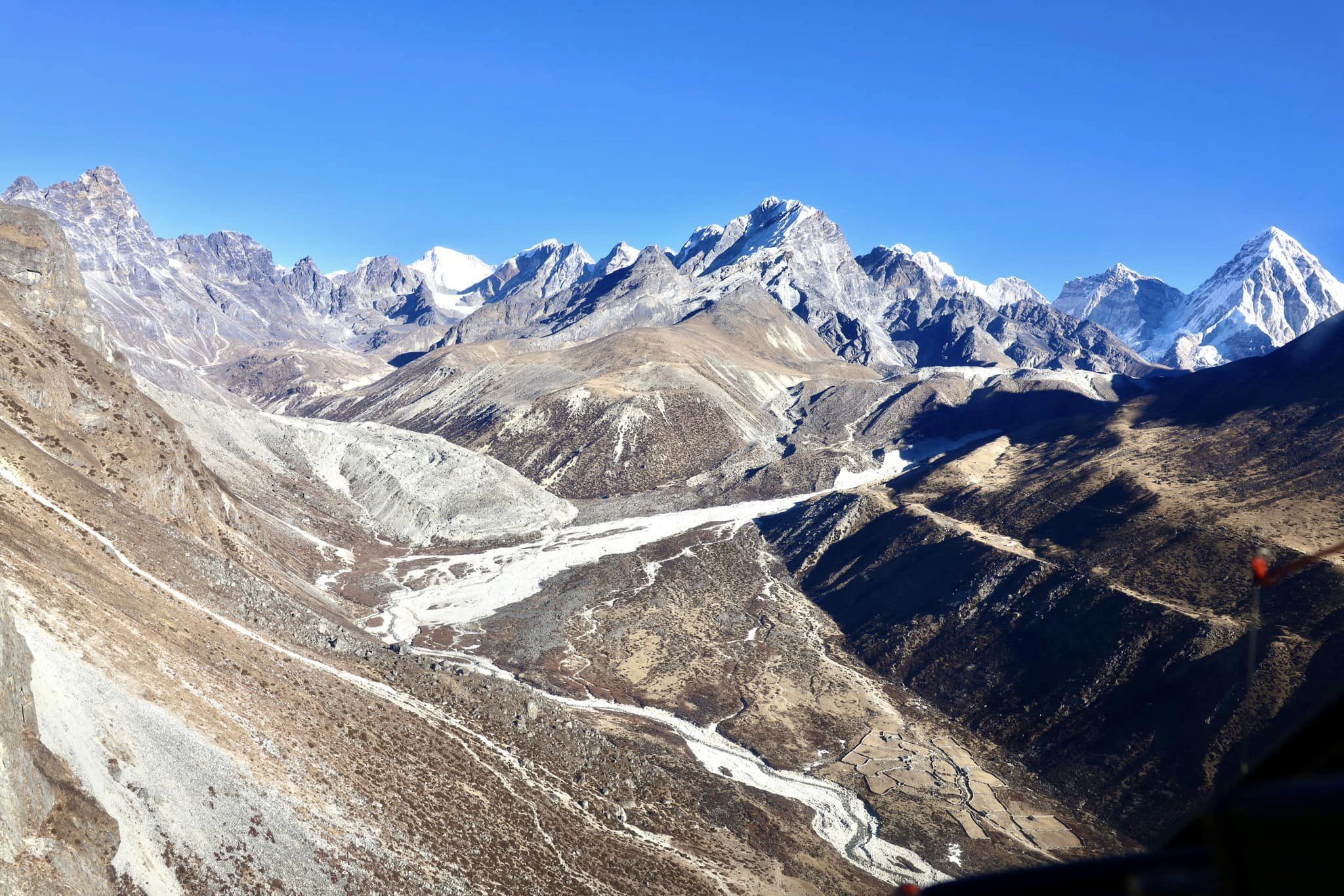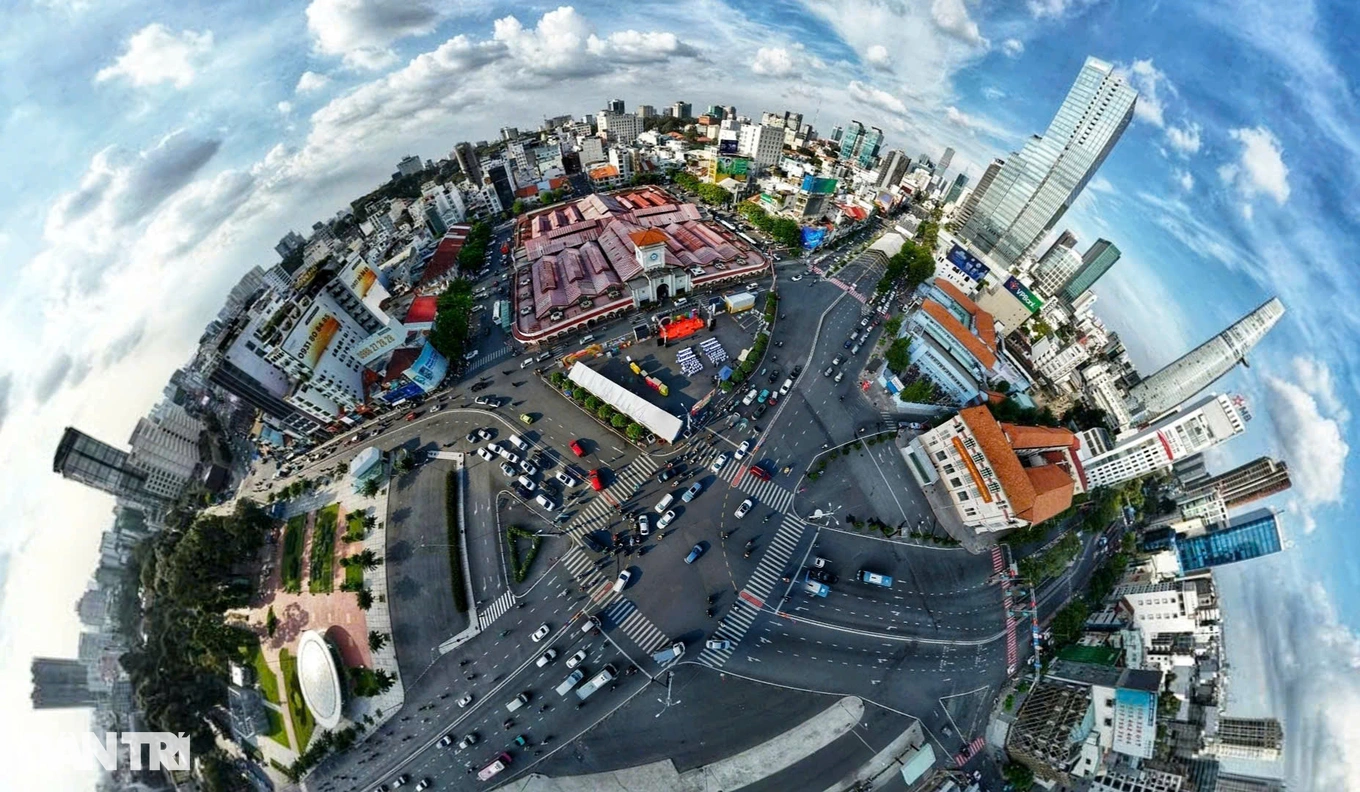During a diving trip in the East African sea, a Vietnamese photographer was overwhelmed when he encountered a sperm whale sleeping upright in the middle of the ocean.
In May, Nguyen Ngoc Thien, a photographer in Ho Chi Minh City, went to the East African sea between the Madagascar triangle, the Reunion Islands (France) and the island nation of Mauritius to search for sperm whales, a species of whale, the world's largest toothed predator.
Over the years, Mr. Thien has studied the biology and behavior of whale species, and has explored many locations in the world where whales live or migrate seasonally that humans can access. The East African sea has trenches 1,000-2,000 m deep, which are home to giant squid and sperm whales. The sea is strictly managed by whale conservation organizations and governments of countries in the region, with only a few vessels licensed to operate diving and filming.
The trip to the East African sea was supposed to take place in 2020, but had to be postponed until May due to the Covid-19 pandemic. Thien said it took 2-3 weeks to search, dive and film with the whales. Despite his extensive diving experience, he still had to learn carefully about the weather, water temperature, currents, underwater landscape and ecosystem, biological characteristics and behaviors of sperm whales, to ensure the dive went smoothly.
Diving and filming sperm whales and most other whale species requires free diving. This is almost the only way to approach this species. Using scuba diving creates bubbles, which can disturb or frighten whales, especially calves. Neither protected areas nor whale conservation organizations allow scuba diving to approach whales.
"Whales tend to move constantly in the open sea, so only free diving with lightweight equipment can flexibly approach this species. Divers should take free diving courses to master the necessary diving skills for the journey," said Mr. Thien.
Before diving, Thien’s team must locate the whales. To increase the probability of finding them, some ships invest in sonar equipment, which detects and records sounds in the ocean. Researchers can program them to detect specific sound frequencies and deploy classification systems, thereby filtering out some of the unique sounds of each whale species.
After determining the location, Mr. Thien and the team members dived to a depth of 10-15 m to get a wide enough angle and a panoramic view of the massive size of the sperm whale. The average size of an adult sperm whale is usually around 12-15 m, some males can reach a size of 20 m.
"The feeling of struggling in the vast ocean, facing fish many times larger than a human body, is overwhelming and indescribable. I understand how small humans are before the magnificence of nature," Mr. Thien expressed.
An adult male sperm whale can be 16-20m long and weigh 35-50 tons, while a female is about 10-15m long and weighs about 20-30 tons. This species of fish often dives 1-2 km deep to feed, each dive lasting 1-2 hours.
During this dive, the male photographer was lucky enough to witness and capture the moment when a sperm whale slept upright. This sight is considered "one of the wonders of the natural world", and is very rare because when they sleep, it is difficult to locate. Even normal sonar equipment is very difficult to detect because sperm whales are almost completely motionless below the surface of the water and do not make any sound when in deep sleep.

Sperm whale in standing sleeping position.
"On the 7th day of the journey, my group and I were unexpectedly lucky enough to witness this spectacular sight with our own eyes. I captured a memorable photo of a sperm whale sleeping standing up," Thien said.
He said that taking pictures underwater depends on many factors. There are three things that are unpredictable and can change at any time, but have a big impact on the quality of an underwater dive and filming session: weather, underwater visibility, and wildlife.
The male photographer said that in the early days of his transition to underwater photography, he happened to admire a photo by Paul Nicklen, an ocean conservationist and famous wildlife photographer of National Geographic. The photo captured the moment when a group of sperm whales were falling into a deep sleep in the middle of the ocean in a vertical direction, like giant pillars floating in the vast space of zero gravity. The photo made Mr. Thien "gasp in amazement" because of the overwhelming and surreal scene, and at the same time inspired him to take underwater photography.
In addition to the East African sea, there are other famous places to dive and film sperm whales, such as the island nation of Dominica in the Caribbean. Mr. Thien shared that tourists who do not have the experience and skills to dive and approach sperm whales should choose to experience whale watching from a boat to ensure safety. He suggested some places such as the Great Barrier Reef or the Gold Coast in Southern Australia, Kaikoura in New Zealand, Husavik and the Azores in Iceland, or the nearest sea area of De Gi, Binh Dinh, where whales often appear.
After a successful sperm whale hunt in East Africa, Thien plans to dive and film humpback whales in French Polynesia or Tonga in the South Pacific.
Bich Phuong
Photo courtesy of NVCC
Source link










































![[Photo] Prime Minister Pham Minh Chinh chairs Government Conference with localities on economic growth](https://vstatic.vietnam.vn/vietnam/resource/IMAGE/2025/2/21/f34583484f2643a2a2b72168a0d64baa)
























































Comment (0)